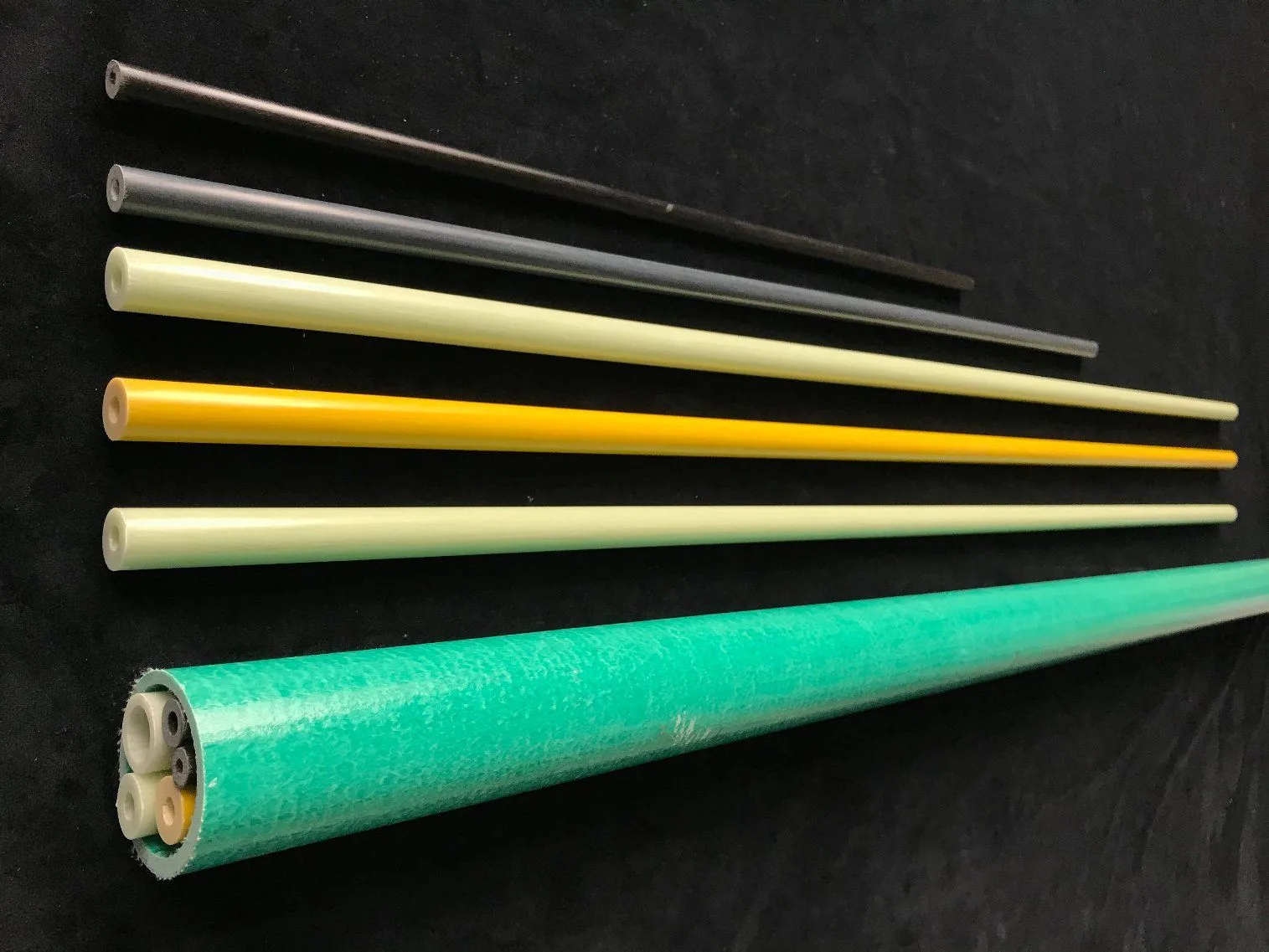Choosing the right type of rod material for your specific application can significantly influence the success and durability of your project. Telescoping fiberglass rods and aluminum rods are both popular choices, each with distinct advantages and disadvantages. Understanding these differences will help you make the best decision for your needs.

telescoping fiberglass rods
Telescoping Fiberglass Rods Overview
Fiberglass rods, especially telescoping types, have gained popularity due to their unique properties and versatility.
Pros of Telescoping Fiberglass Rods
Lightweight and Portable: Fiberglass rods are significantly lighter, making them easy to transport and handle.
Corrosion-Resistant: Ideal for use in wet, humid, or marine environments, fiberglass does not corrode or degrade easily.
Electrical Insulation: Fiberglass is non-conductive, making it suitable for electrical applications like antennas or extension rods in hazardous areas.
Flexibility: These rods can bend without breaking, ideal for applications requiring flexibility, like tent poles or fishing rods.
Durability: Fiberglass withstands environmental stress, resisting weather impacts over prolonged outdoor use.
Cons of Telescoping Fiberglass Rods
Impact Sensitivity: Although durable, fiberglass can be susceptible to impact damage, potentially cracking or chipping under strong direct impacts.
Higher Initial Cost: Fiberglass rods often have a higher upfront cost than aluminum rods, though long-term savings from reduced maintenance may offset this.
Aluminum Rods Overview
Aluminum rods offer a distinctly different set of advantages, particularly valued in structural or high-strength applications.
Pros of Aluminum Rods
High Strength: Aluminum rods are strong and suitable for supporting heavier loads, making them ideal for structural support.
Cost-Effective: Aluminum rods are typically more affordable upfront compared to fiberglass alternatives.
Thermal Conductivity: Useful in scenarios where heat dissipation is essential.
Rigid and Stable: Aluminum maintains rigidity under stress, providing stable support in construction or heavy-duty tasks.
Cons of Aluminum Rods
Corrosion Vulnerability: Aluminum corrodes more readily, especially in salty or moist environments, requiring frequent maintenance or protective coatings.
Poor Electrical Insulation: Aluminum is conductive, limiting applications involving electricity or sensitive environments.
Heavier Weight: The higher weight of aluminum can limit portability and ease of use in mobile applications.
Direct Comparison: Key Factors to Consider
When comparing fiberglass and aluminum rods, consider these critical factors to choose the best material:
Durability and Strength
Fiberglass: Better flexibility and environmental durability, ideal for dynamic use cases like camping or fishing.
Aluminum: Superior strength for static, structural applications like scaffolding, frames, or support systems.
Weight and Portability
Fiberglass rods are preferred for backpacking, outdoor adventures, and portable equipment due to their lightness.
Aluminum rods, though sturdy, may hinder portability due to increased weight, suited best for stationary or vehicle-supported setups.
Resistance to Corrosion and Weather
Fiberglass rods dominate in marine, coastal, or high-humidity environments due to excellent corrosion resistance.
Aluminum rods, while corrosion-prone, can perform adequately if regularly maintained or coated with corrosion-resistant materials.
Cost Efficiency and Long-Term Value
Initial Investment: Aluminum rods offer an immediate economic advantage, suitable for projects with budget constraints.
Maintenance Costs: Fiberglass rods incur fewer ongoing costs, making them more economically viable over extended periods, particularly in outdoor conditions.
Practical Recommendations for Choosing the Right Rod
To determine the best rod material for your project, consider these key questions:
Is portability or ease of handling essential?
Will the rods be exposed to moisture, saltwater, or harsh environments?
Are electrical insulation properties required?
Is flexibility important, or is structural rigidity paramount?
What is your initial and long-term budget?
Common usage scenarios:
Telescoping Fiberglass Rods: Fishing poles, tent supports, antennas, outdoor flags, and mobile installations.
Aluminum Rods: Structural supports, scaffolding, antenna towers, and stable, long-term installations.
Conclusion
In summary, telescoping fiberglass rods are best for applications where lightweight handling, flexibility, corrosion resistance, and electrical insulation are crucial. Conversely, aluminum rods offer superior strength and rigidity for structural applications where corrosion and electrical conductivity are less of an issue.
Before deciding, clearly identify your priorities and environmental conditions. Are you prioritizing cost, strength, or durability? We hope this comparison helps clarify your choice.
Have you used telescoping fiberglass or aluminum rods in your projects? Share your experiences or ask questions below. Don’t forget to subscribe for more insightful comparisons and practical guides to help you make informed decisions!




























